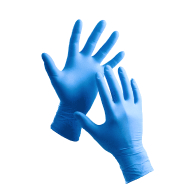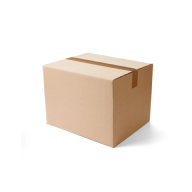Sir Safety System Nassau Jacket Green
Product description
Related Content
Product Features:
- PU coated polyester Twill fabric
- Padding: 220 g/m² on body, 180 g/m² on sleeves
- Warm and breathable
- Concealed zipper closure with snap buttons
- Collar lining and cuffs in fleece fabric
- Detachable lined hood with drawstring adjustment
- Four three-dimensional pockets with flap and snap buttons
- Multi-purpose pocket with flap and Velcro:
— Complete opening
— Badge holder
— Pen holder
— Phone pocket
— Multiple compartments
- Two inner pockets
- Detachable sleeves
- Side muff pockets
- Elasticated cuffs adjustable with Velcro
Standard:
- EN 14058
Offers full arm coverage for protection and warmth in demanding work environments. Enhances safety and comfort with durable, long-lasting sleeves.
Offers head and neck weather protection. The attached hood provides warmth and shields against elements, enhancing comfort and functionality.
Measured in grams per square meter (g/m²), indicating fabric density and durability. Higher numbers mean heavier, more protective materials for demanding environments.
Indicates the jacket's primary hue, affecting visibility, practicality, and compliance with workplace safety standards or team identification.
Provides secure, concealed storage inside the garment. Ideal for protecting valuables and personal items from the elements and potential loss.
Designed for secure phone storage and easy access. Keeps devices protected and readily available on the job. Ideal for convenience and efficiency.
The mechanism that secures the garment, affecting ease of use, security, and functionality. Different styles offer varying levels of quick access and durability.
Defines the neck area design that affects weather protection, comfort, and compatibility with safety equipment like helmets and other PPE.
Defines how sleeve ends are finished and secured at the wrist, affecting weather protection, comfort, and compatibility with work gloves.
- Cold Protective
- Machine Washable
Request a free sample
Test first and buy later. Visit any product page to request your free sample.
Standards and labels
EN ISO 9001:2015 is a standard that sets out the requirements for a quality management system (QMS). It is a set of guidelines that organizations can follow to ensure that they meet customer requirements and enhance customer satisfaction. The standard is based on the plan-do-check-act model and focuses on continuous improvement. It covers the design, development, production, installation, and servicing of products. Organizations can get certified to this standard, which means that they have been independently audited and found to meet the requirements of the standard. The certification process includes regular audits to ensure that the organization continues to meet the standard's requirements.
Test results
Service Reliability PassedISO 14001:2015 is a standard that specifies requirements for an environmental management system (EMS). It includes requirements for how companies should design, implement, maintain and improve their EMS to ensure that they minimize negative impacts on the environment and comply with environmental regulations. Test results can include information on how well the EMS is functioning, how well it is being followed, and how effective it is in reducing environmental impacts. The standard also includes requirements for how the company should document and record their EMS performance and continuously improve it.
Test results
Environmental Management PassedThe standard ISO 14001:2015 pertains to environmental management systems (EMS). A passed test result under this standard indicates that an organization's EMS meets the stringent criteria set forth for managing environmental responsibilities systematically. This ensures sustainable development while considering environmental impacts. Specifically, ISO 14001:2015 includes requirements for a framework that an organization can follow rather than establishing environmental performance criteria. It encompasses various aspects such as compliance obligations, planning actions to address risks and opportunities, and continual improvement. The test primarily involves evaluating the effectiveness of the EMS in supporting a company to achieve its intended outcomes regarding its environmental performance. If a company has passed this evaluation, it reflects their commitment to environmental stewardship, potentially enhancing their marketability and aiding in compliance with statutory and regulatory requirements.
EN 14058:2004 is a European standard that defines the requirements for the design, testing and performance of portable fire extinguishers. It sets requirements for the extinguisher's ability to extinguish fires, its durability, ease of use and safety, and the accuracy of its labeling and instructions. Test results may include measures such as the extinguisher's fire-extinguishing capability, its ability to withstand impact and vibration, and its pressure-retention and leakage performance. However, this standard is outdated and replaced by newer standards.
CE Marking is a label that shows a product meets certain safety and environmental standards set by the European Union. To get the CE Marking, a company must test and certify their product meets these standards. CE Marking is required for many products sold in the EU, including electronics, machinery, toys and medical devices. It helps ensure that products are safe for consumers and the environment, and allows for easy trade within the EU.
Oeko-Tex Standard 100 is a product certification program for textiles, which is awarded by the Oeko-Tex Association. This program verifies that the textile products are free from harmful chemicals. To be able to use the Oeko-Tex Standard 100 label, a product must meet certain requirements set by the Oeko-Tex Association which include limits on the levels of harmful substances such as pesticides, heavy metals, and formaldehyde. The textile products are inspected and certified by Oeko-Tex, they can use the Oeko-Tex Standard 100 label on their packaging to show that they are free from harmful chemicals. This certification is for all types of textiles, from raw materials to finished products, and it is globally recognized.
PPE stands for "personal protective equipment." PPE Category 1 refers to equipment that is simple and easy to use, and has a lower level of risk. Examples of PPE Category 1 include gloves, goggles, and simple respirators. In Europe, PPE Category 1 must meet certain safety standards set by the European Union. This means that it must be designed and manufactured to protect the user without causing harm. Companies that make or sell PPE must prove that it meets these standards.
SIR SAFETY SYSTEM delivery terms
Free delivery when you order more than 150,00 € from SIR SAFETY SYSTEM
Supplier shipping fee 6,33 €
Brand minimum 150,00 €
64,76 €
Price per piece
64,76 € / piece
Shipping fee is 6,33 € for orders under 150,00 €
Sold in units of one piece
Need larger quantities?
Other products you may like
Recently viewed
Need help?
Get help from our experts
Other products you may like
Similar products you may like
Recommended for you
SIR SAFETY SYSTEM
Delivery time: 7 business days
Orders from 150,00 €
Supplier shipping fee 6,33 €
Free shipping on orders over 150,00 €



Find +150,000 products from hundreds of brands
Autonomous sourcing platform
The most efficient way to source and order supplies for your operations
Sourcing
Ordering
List products you’re looking for and we’ll find the best products and prices for you – all for free.
Need help?
Get help from our experts
